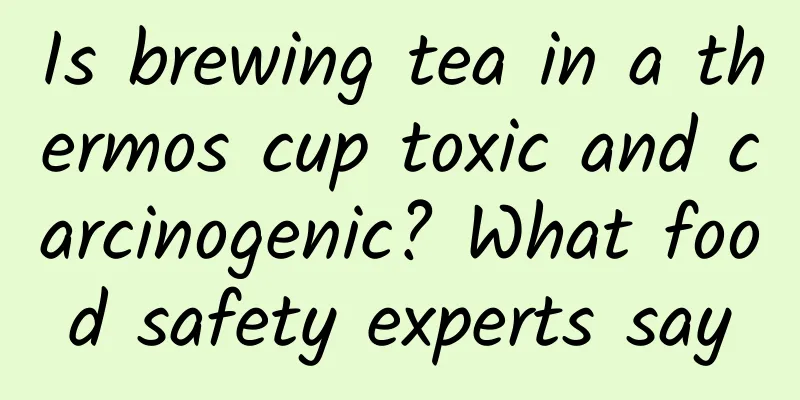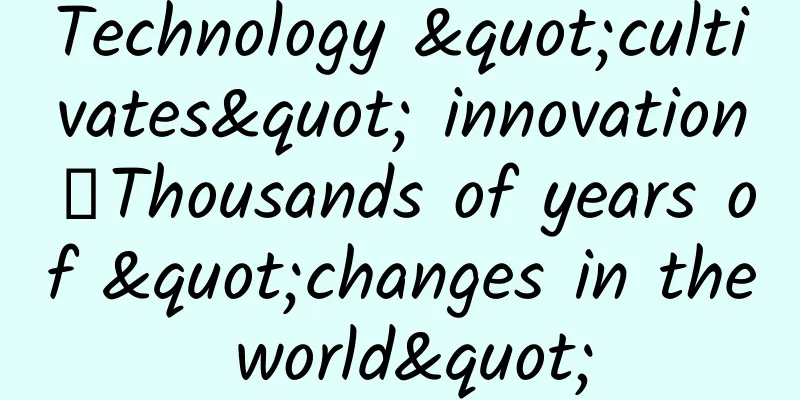Is brewing tea in a thermos cup toxic and carcinogenic? What food safety experts say

|
"When people reach middle age, they can't help but soak wolfberries in a thermos cup." Many people have the habit of using a thermos cup to make tea. However, some people often say that "brewing tea in a thermos cup is harmful to health" and "brewing tea in a thermos cup will destroy the nutritional value of tea." There are even claims that "long-term use of a thermos cup to make tea may cause cancer." Recently, the WeChat public account "Science Rumors Refutation" also received questions from fans, asking whether stainless steel thermos cups can be used to make tea. So, is the claim that brewing tea in a thermos cup is harmful an exaggeration or is it true? Tuchong Creative 01 What are the materials and insulation principles of thermos bottles? To know whether it is toxic to brew tea in a thermos cup, let's first understand the insulation principle of the thermos cup. As the name suggests, a thermos cup refers to a container that can keep the food inside at a certain temperature. The "insulation" here actually includes two functions: heat preservation and cold preservation. Thermos cups are generally insulated by a vacuum interlayer between the cup body and the double-layer structure of the liner. Some thermos cups will further enhance the insulation effect by copper plating the outside of the liner and using air-absorbing materials in the interlayer. At present, my country has a series of national standards and industry standards to control the quality and technical performance of such products, such as "Stainless Steel Vacuum Insulation Container" (GB/T 40355-2021), "Stainless Steel Vacuum Cup" (GB/T 29606-2013) and "Stainless Steel Vacuum Porcelain Insulation Cup" (QB/T 5613-2021). The materials used in the production of thermos cups are diverse, including common stainless steel, ceramics, glass, etc., as well as plastics, silicone rubber, coatings, platings and other materials. In the national food safety standard system, thermos cups fall under the management category of "food contact materials and products". At present, my country has established a complete national food safety standard system to control the safety of the above materials, such as the "National Food Safety Standard Glass Products" (GB 4806.5-2016), "National Food Safety Standard Food Contact Metal Materials and Products" (GB 4806.9-2016), etc. As food contact materials and products, thermos cups must comply with the provisions of my country's national food safety standards before they can be put on the market. Tuchong Creative 02 Is brewing tea in a thermos cup really harmful to health? The safety risks of food contact materials mainly come from substances that may "migrate" into food and cause health hazards, such as heavy metal elements in metal materials, certain monomers and additives in plastic materials, etc. my country's national food safety standard system for food contact materials stipulates a series of restrictive requirements for various materials, including the limit of harmful substances, the scope of use of different materials, and restricted use conditions, etc., to ensure that food contact materials will not cause harm to human health during normal use. The restricted use conditions stipulated in the standards or the precautions for the use of food contact materials themselves should be marked on the product label or instructions. The common use of thermos cups is to hold all kinds of hot or cold food for a long time, including making tea. Therefore, as long as you choose qualified products and use the thermos cups to make tea according to the product labels or instructions, it will not cause harm to human health. Tuchong Creative 03 What should you pay attention to when brewing tea in a thermos cup? From a food safety perspective: 1. When purchasing a thermos cup, you should pay attention to choosing one through formal channels that has information such as the manufacturer, production date, and certificate of conformity. 2. Carefully clean the cup body, cup lid, rubber pad, etc. before first use to prevent residual processing aids or contaminants from migrating into food during processing or storage and transportation and causing health hazards. 3. Since thermos cups are made of various materials and can be used to keep heat or cold, you should pay attention to the label and instructions of the thermos cup before using it to make tea. For example, a thermos cup that is only used to keep cold may not be suitable for holding hot tea, but can be used to make cold brewed tea. 4. Thermos cups usually have complex structural designs and have sanitary dead corners that are difficult to clean, such as sealing gaskets, pop-up lids, cup mouth threads, etc. They should be cleaned in time after use to avoid dirt accumulation and microbial reproduction. 5. For thermos cups with surface coating, you should pay attention to protecting the coating when cleaning. Damage to the surface coating may cause the coating fragments to peel off, or make it easier for substances in the substrate behind the coating to migrate into the food. Therefore, once the coating is damaged, the thermos cup should be replaced in time. 6. If the material of the thermos cup is severely worn, yellowed, blackened or cracked, the thermos cup should be replaced in time. From a sensory perspective: 1. Since the thermos cup can keep the temperature of the contents stable for a long time, when making tea, you should pay attention to controlling the brewing temperature and time according to the type of tea to avoid affecting the quality and taste of the tea. 2. Some metal thermos bottles may release elements with a "metallic taste", such as iron, while some silicone rubber materials may have a unique odor. Although the above situations will not cause food safety issues, and some tastes or odors can be eliminated or weakened by thorough cleaning, consumers with higher sensory requirements can choose thermos bottles made of other materials according to their needs. Author: Zhang Hong, Associate Researcher, National Food Safety Risk Assessment Center Review | Zhu Lei, Researcher at the National Food Safety Risk Assessment Center This article is produced by the "Science Rumor Refutation Platform" (ID: Science_Facts). Please indicate the source when reprinting. The pictures in this article are from the copyright gallery and are not authorized for reproduction. |
>>: Unlocking agricultural black technology, farming is like playing a game
Recommend
The secret of increasing followers: operators must learn to cooperate
There are many miscellaneous tasks in operations ...
How to combat online music piracy? The key is not just about how many copyrights you buy
Since the rise of online music, Chinese people ha...
When will the Beijing epidemic end in 2022? How long will it take to lift the epidemic and remove the star? Attached is the latest news on the epidemic
This round of local epidemic in Beijing has not y...
Don’t let disinfection become “poisoning”, this is how to do home disinfection safely!
Recently, with the adjustment of national epidemi...
Science Time Machine | The “birth” of batteries can actually be thanked to frogs?
One of the important qualities of scientists is t...
How much does a 400 call cost and what does it include?
When many companies apply for 400 telephone numbe...
The amazing comments on TikTok made me laugh to death
Attention, fans! If you see someone holding a cel...
Short video operation "routines" and traffic surges!
In the era of mobile Internet, short videos have ...
Marketing promotion methods | How to create private domain traffic?
Friends from different industries asked them how ...
90s hacker hacks Shanghai Disneyland ticket: buys 1 cent and earns 500,000 in a week
Data officially released by the Walt Disney Compa...
Why are airplane windows rounded instead of square?
Nowadays, airplanes have become an indispensable ...
Why did Steve Jobs forbid his children from using iPads at home?
Although Apple invented the iPad, as one of the im...
Review of 2016: Who are the top 10 most frustrated mobile phone manufacturers?
2016 is about to end. This year, the growth rate ...
Zhu Xian audiobook, Zhu Xian audiobook Beiming audiobook Baidu cloud!
Zhu Xian audiobook, Zhu Xian audiobook Beiming au...
Compilation of hot marketing advertising materials for August!
August is coming soon. Are you ready for August&#...









